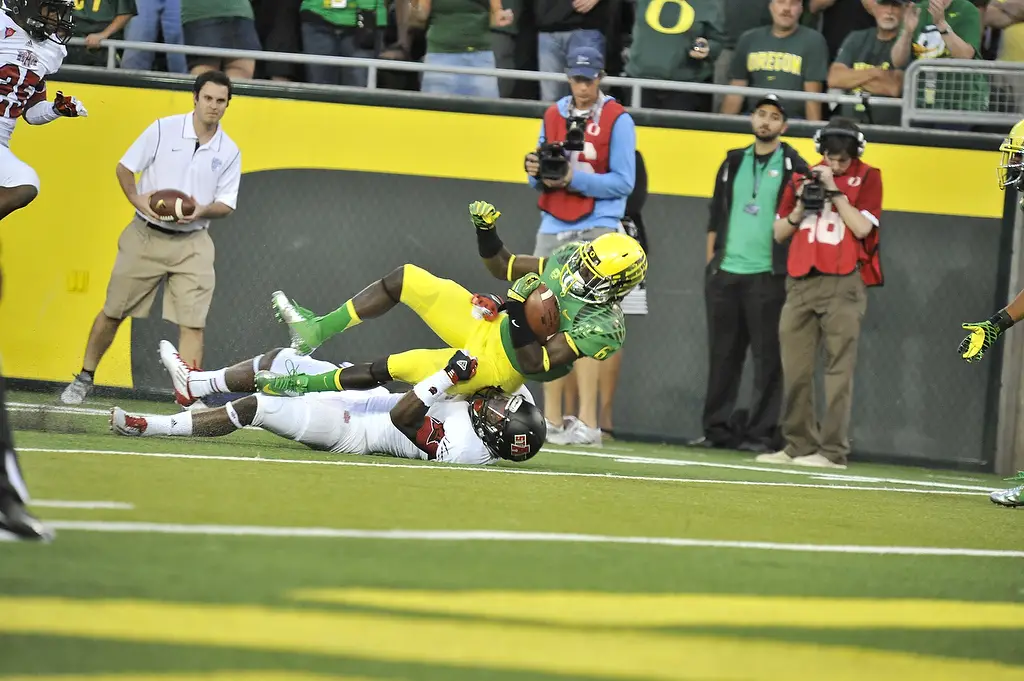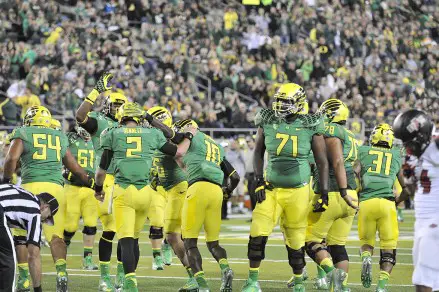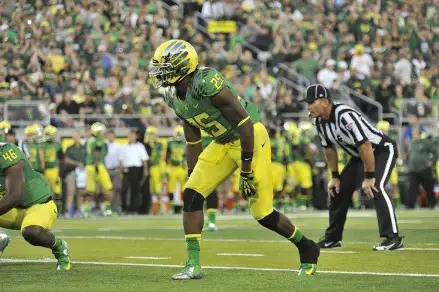We as football fans like to have things laid out neatly in front of us. In order to predict what will occur in the coming season, we like to be able to know what we are going to see before we see it. We want to conceptualize what will happen on the field and who will do it. We like to be able to project the score, who will play the important roles, what stats will be accumulated, etc. All of these fanatical nuances combine to place the utmost importance on one document before the season gets underway: the depth chart.
For many teams, the depth chart is a script written for the season, with how well the characters perform dictating the success of the entire operation.
At Penn State, head coach Bill O’Brien released a post-spring depth chart in June. Statistics from last season provide a direct corollary to all his skill positions. Dabo Swinney at Clemson made his intentions clear with a virtual drag-and-drop from the stat sheet to depth chart he released after the Tigers’ spring practices concluded in late April. Mark Richt at Georgia also published an after-spring barometer.
For Duck fans, we all know the chances of Mark Helfrich releasing a depth chart that isn’t mandated is equivalent to the chances of Mike Leach being called a nice guy – that is to say, zero.
Much to the dismay of the Duck faithful, the Oregon coaches don’t worry about a depth chart as the U of O has the privilege of rolling in a wealth of depth that won’t fit on a chart.
When a spreadsheet with names is finally made available a week before the season gets underway, it will make clear the starters – as in who will start the game on the field. After that it all goes out the window and there is a new depth chart for each play of each formation and defensive set.
Last year’s preseason depth chart released in the last week of August had De’Anthony Thomas listed as the backup tailback, but he finished as the leading pass-catcher for the Ducks, well ahead of the No. 1 listed wideout Josh Huff. Eric Dungy and B.J. Kelley were listed in the top six for receivers on the chart, but finished behind Will Murphy, Dwayne Stanford and Rahsaan Vaughn in catches.
Pharaoh Brown, Terrence Daniel and Koa Ka’ai were all tied with Colt Lyerla for the starting tight end spot one week before the 2012 season. When the season ended, Lyerla has played a bit of running back and finished with 25 grabs and seven total touchdowns. Brown, Daniel and Ka’ai finished with four total catches.
Four of the 24 defensive players to record 10 or more tackles last season were guys not even listed on the initial two-deep and three guys originally listed as backups finished in the top eight in tackles for the team. The man who finished the season as the team leader in interceptions (Erick Dargan) was not a starter until the 11th game of the season.
To say the least, the Oregon depth chart matters very little through the course of the season. Lots of stock will be put in who is place atop the list of running backs when the season gets underway, but chances are no matter if it is Thomas, Byron Marshall or Thomas Tyner as the first name on the order, we won’t know who gets the bulk of the carries until at least midway through conference play. The Duck coaching staff has a garage full of premier cars and they will want to test drive them all at different times and on different tracks before deciding which they like the best.
Huff is the top receiver for the Ducks but behind him is a full bar of pass-catching talent that can be mixed to make defenses look drunk. Why worry about which order Bralon Addison, Chance Allen, Devon Allen, Darron Carrington, Dungy, Hawkins, Kelley, Lowe, Stanford and Blake Stanton end up on the sorted document in late August? The whole point of having depth is to divide and conquer. These guys will be pulling in tosses from Mariota before defenses can learn the names of all the threats they will have to account for. Subscribing to a depth chart is too encompassing for the unending substitution packages, especially with receivers.
On the defensive side, with the departure of three entrenched starters at linebacker and drop backer, defensive coordinator Nick Allioti will have even more flexibility to trial a dozen linebackers, with six or seven of them likely to fill two linebacker positions through rotation (just like he does with the four linemen up front), again rendering a depth chart irrelevant.
While we may not know who will play which snaps and in which role, most Duck fans have faith all will go well, so why not sit back and enjoy some surprise?
Feature image courtesy of Kevin Cline
ANNOUNCEMENTS
*If you would like to join the other 80+ volunteers at FishDuck.com, and have five hours a week to donate… we have slots open for volunteer Editors, Writers, Analysts, Photo Archivists and Social Media Associates. Can you help us manage people? Consider our volunteer Sales Manager and HR Manager positions and give some time each week to help young associates learn! E-mail us at charles@fishduck.
*Don’t miss our football analysis every Tuesday, our Recruiting Update every Wednesday and our new Chip Kelly updates every Friday!
Related Articles:
Chip Kelly Update: Everything's Good Again ...
Chip Kelly Update: Wailing and Gnashing of Teeth
Shock and Awe -- The Oregon Ducks' Football Hangover Effect
Despite Lopsided Score, Georgia State "Never Stopped Believing"
Hope Springs Eternal for Ducks
Incompetent Pac-12 Officials: How Do You Miss ALL of THIS?
Jackson Long is a graduate of the University of Oregon’s school of journalism. A sports journalist for over six years, Jackson has accumulated over 300 published works across a multitude of publications and platforms. He has been a beat reporter covering the University of Oregon for football, men’s basketball and track and field. As a journalist, he provided live coverage from events including: the Fiesta Bowl in Glendale, Pac-12 Men’s Basketball Tournament in Las Vegas, Rounds 1 and 2 of March Madness in San Jose and the Sweet 16 and Elite 8 in Indianapolis, all in 2013. He also covered the NCAA Track and Field Championships in Eugene that year. With an impressive portfolio of works mainly focused on long-form, feature style writing, Jackson hopes to have a career with a major sports media purveyor.



